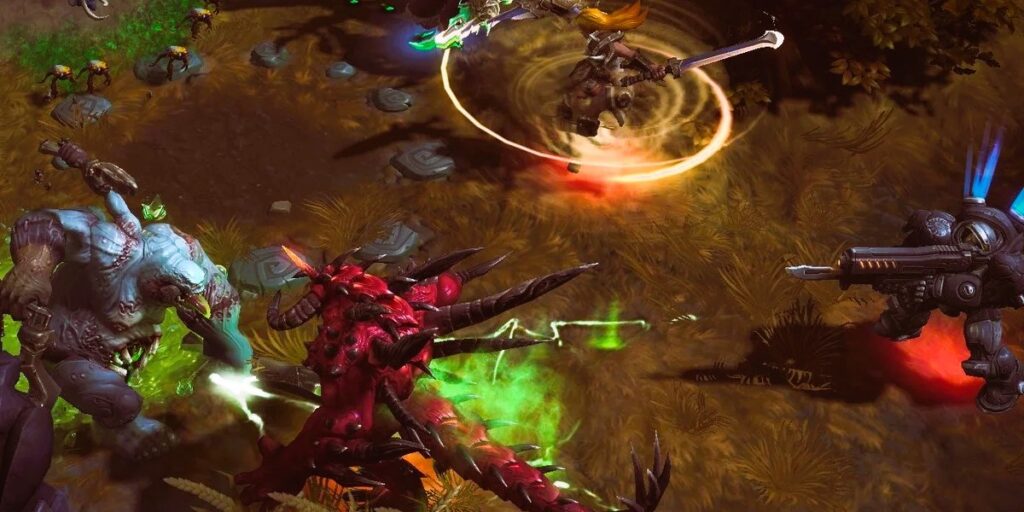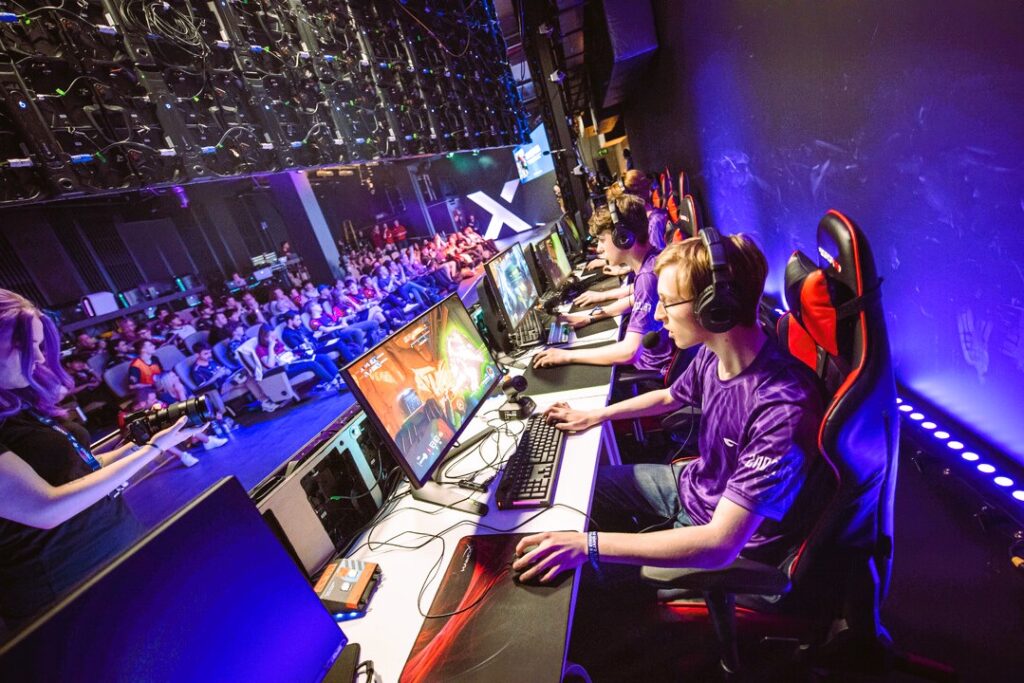Multiplayer Online Battle Arena (MOBA) games have become one of the most popular and influential genres in the gaming industry. With titles like League of Legends, Dota 2, and Heroes of the Storm leading the charge, MOBA games have reshaped how players engage with video games and have made a significant impact on the gaming landscape. This article explores the history of MOBA games, their evolution, and their influence on the broader gaming industry.
The Origins of MOBA Games
The roots of the MOBA genre can be traced back to the early 2000s with the advent of Warcraft III and its custom map editor. The genre’s birth can be credited to the creative community within this game, where modders began experimenting with new gameplay mechanics and game modes.
The Dawn of a New Genre: Aeon of Strife
One of the earliest and most influential mods was Aeon of Strife, which was created for StarCraft by a user named Aeon64. This mod introduced the core elements of the MOBA genre, featuring a team-based structure where players controlled a single unit and aimed to destroy the enemy’s base. Although it was not as polished as later MOBAs, Aeon of Strife laid the groundwork for what was to come.
Defense of the Ancients (DotA)
The MOBA genre began to take shape with the release of Defense of the Ancients (DotA) for Warcraft III. Developed by a modder known as “Eul,” DotA built upon the foundation of Aeon of Strife and introduced several key features that would become staples of the genre. The mod gained widespread popularity, and its influence was felt across the gaming community.
DotA was further developed by a modder named Steve “Guinness” Feak, who introduced DotA Allstars. This version of the mod became the definitive iteration, featuring a more refined gameplay experience and a larger roster of heroes. The success of DotA set the stage for the rise of MOBA games as a mainstream genre.
The Rise of Modern MOBAs

As the MOBA genre gained traction, several games emerged that helped to define and popularize the genre further. These games built on the success of DotA and introduced new innovations that would shape the future of MOBAs.
League of Legends
Released in 2009 by Riot Games, League of Legends quickly became a dominant force in the MOBA genre. Drawing inspiration from DotA, Riot Games aimed to create a more accessible and polished experience. The game featured a diverse roster of champions, a streamlined gameplay experience, and a strong focus on competitive play.
League of Legends revolutionized the MOBA genre with its regular updates, seasonal events, and robust esports ecosystem. The game became a cornerstone of the esports scene, with major tournaments and a dedicated fanbase that continues to thrive.
Dota 2
In 2013, Valve Corporation released Dota 2, a direct sequel to the original DotA mod. Dota 2 aimed to preserve the core elements of the original game while introducing new features and improvements. The game received critical acclaim for its depth and complexity, and it quickly became one of the most popular MOBAs in the world.
Valve’s commitment to esports was evident in Dota 2, with the game hosting the annual International tournament. The event became one of the most prestigious and lucrative esports competitions, attracting teams from around the globe and showcasing the skill and strategy required to excel in the game.
Heroes of the Storm
Blizzard Entertainment entered the MOBA scene with Heroes of the Storm, released in 2015. The game combined characters from Blizzard’s various franchises, including World of Warcraft, StarCraft, and Diablo. Heroes of the Storm offered a more casual and team-focused experience compared to its competitors, with unique maps and objectives that deviated from the traditional MOBA formula.
While Heroes of the Storm did not achieve the same level of popularity as League of Legends or Dota 2, it contributed to the diversification of the MOBA genre and introduced new gameplay elements that influenced other games.
The Impact of MOBA Games on the Industry
MOBA games have had a profound impact on the gaming industry, influencing game design, esports, and player culture.
Influence on Game Design
The success of MOBA games has led to the adoption of their mechanics and features in other genres. Elements such as hero-based gameplay, objective-based maps, and team coordination have been integrated into various games, including battle royales and hero shooters. The MOBA genre’s focus on strategy, teamwork, and progression has set a benchmark for game design and player engagement. The impact of streaming platforms on competitive gaming, read more in our article.
Growth of Esports

MOBA games have played a crucial role in the growth of esports. Titles like League of Legends and Dota 2 have become central to the esports ecosystem, with large-scale tournaments, professional leagues, and dedicated fanbases. The rise of MOBA esports has demonstrated the potential for competitive gaming to become a mainstream entertainment industry, with significant investments from sponsors, media companies, and game developers.
Community and Culture
MOBA games have fostered vibrant and passionate communities. Players form teams, participate in online forums, and engage in discussions about strategy and gameplay. The genre’s emphasis on teamwork and competition has created a strong sense of camaraderie and rivalry among players. Additionally, the accessibility of MOBA games has contributed to their widespread appeal, attracting players of all skill levels and backgrounds.
The history of MOBA games is a testament to the genre’s innovation, evolution, and impact on the gaming industry. From the early days of Aeon of Strife and Defense of the Ancients to the modern successes of League of Legends and Dota 2, MOBAs have shaped the way players engage with video games and have influenced the broader gaming landscape. As the genre continues to evolve, it will undoubtedly leave a lasting legacy on the industry and inspire future generations of gamers.
For more information on the history and development of MOBA games, you can explore resources like Wikipedia for comprehensive coverage and expert insights.

